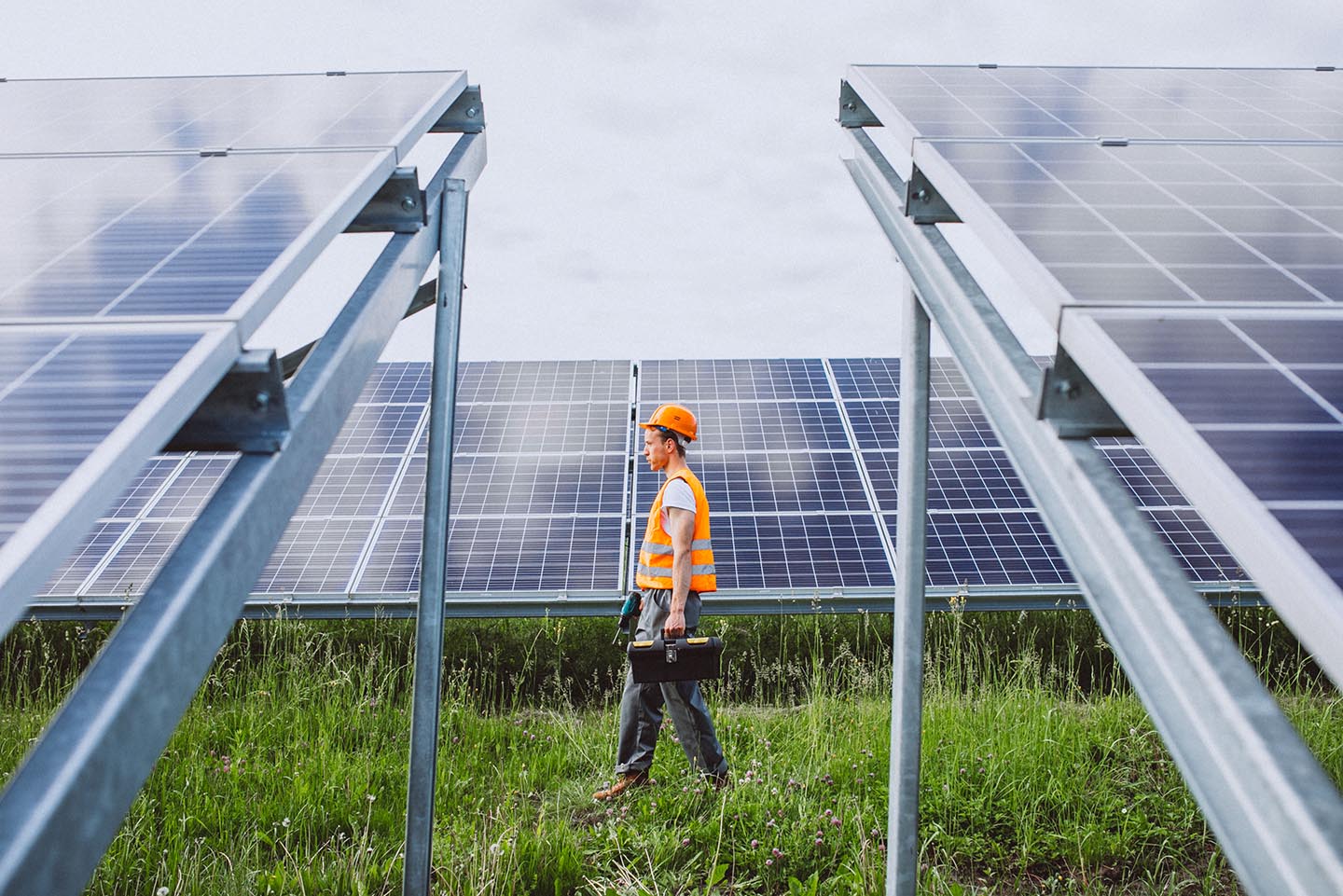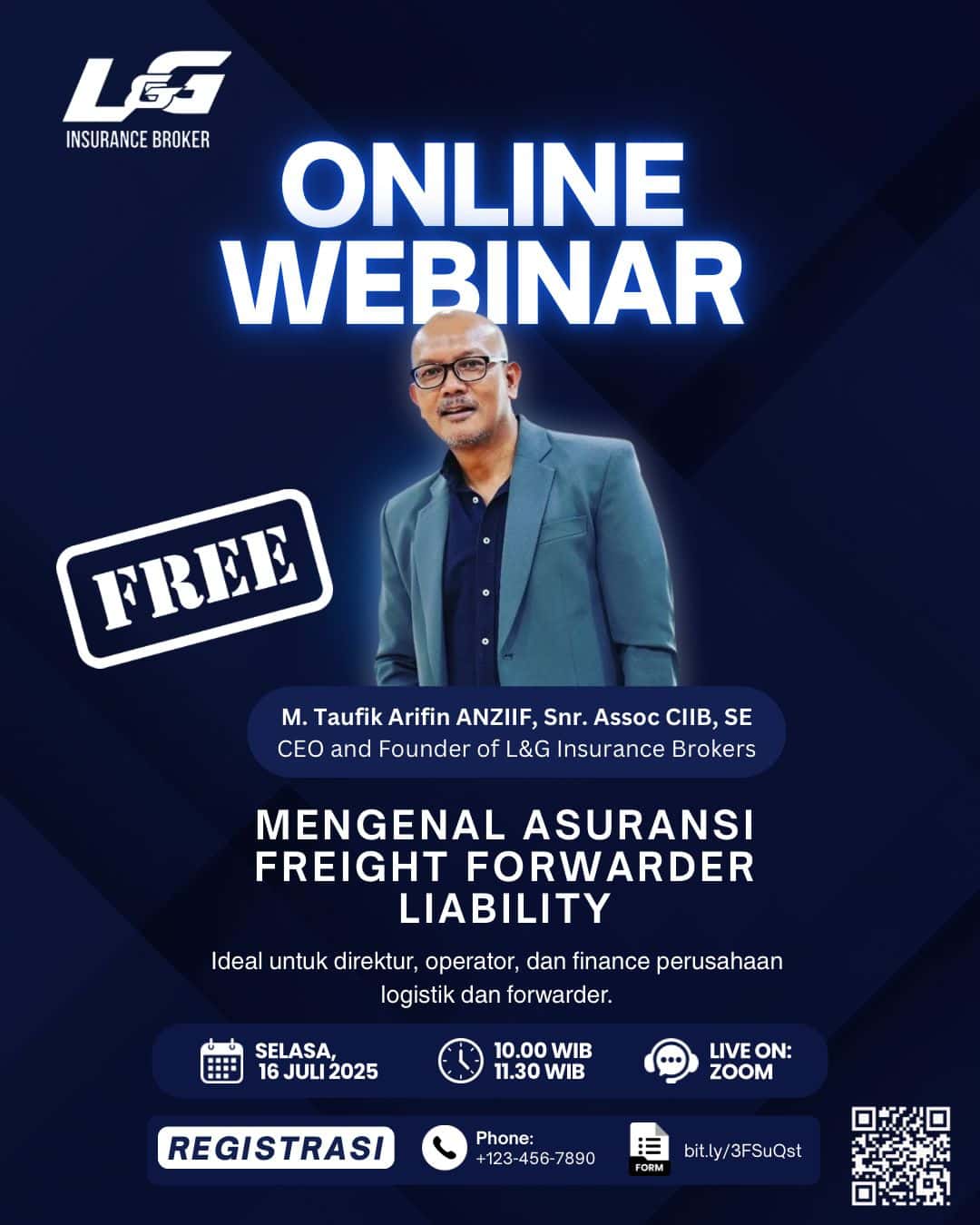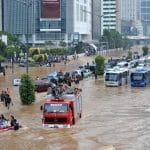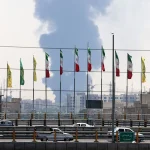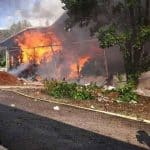Liga Asuransi – Risk takers, how are you? Hope your business is fine.
As usual, on this blog we always discuss risk management and insurance. Here we discuss risks and insurance for Solar Power Plants (PLSTS). If you are interested in this article, please share it with your colleagues so that they also understand like you.
Solar Power Plants (PLTS) have become a promising solution for utilizing renewable energy in Indonesia. However, like every project, PLTS construction also involves certain risks that need to be taken into account. In this context, insurance plays an important role in protecting investments and reducing possible negative impacts.
One of the main risks faced in the construction of PLTS is the large investment value. The PLTS development process requires high technology and significant infrastructure, which of course requires substantial investment.
In the case of building a PLTS with a capacity of just 1 megawatt, the investment value could reach millions of US dollars. Therefore, it is important for stakeholders to protect their investments with proper insurance.
UNDERSTANDING THE RISKS FACED BY PLTS
Apart from financial risks, the location of PLTS construction can also be a challenge. Some solar PV projects are built in remote or hard-to-reach areas, which impacts the ability to carry out installation and repairs efficiently. This risk can be overcome with insurance that covers the costs of shipping, maintenance and repair of equipment.
This insurance will provide protection in the event of equipment damage, loss or damage during shipping, as well as repair costs due to damage that occurs during PLTS operation.
Apart from that, PLTS is also vulnerable to weather risks which can affect performance and productivity. Extreme weather such as storms, heavy rain, or prolonged heat waves can disrupt PLTS operations and even cause physical damage. In this case, weather insurance or insurance that covers weather risks can provide protection against losses due to reduced performance or damage caused by bad weather.
To manage all these risks, engaging an insurance broker is a smart decision. Insurance brokers have specialist knowledge and experience in the renewable energy industry and can assist in identifying relevant risks and offering appropriate insurance solutions. They have access to a broad insurance market, allowing stakeholders to choose from a variety of policies to suit their needs.
In facing the risks and challenges associated with PLTS construction, it is important to understand the need for comprehensive insurance protection. Through appropriate policies, stakeholders can protect their investments, minimize financial risks, and ensure the continuity of PLTS operations.
In the increasingly rapid development of the renewable energy industry, the role of insurance brokers is not only to provide protection, but also to provide trust and confidence to stakeholders in achieving long-term success.
The investment required to build a Solar Power Plant (PLTS) is indeed very large, and locations that are difficult to reach also increase the level of risk that must be taken into account. Therefore, it is important to implement effective risk management and obtain high-quality insurance coverage. Thus, if an accident or damage occurs, the costs of handling and repairing can be borne by the insurance company.
OVERCOMING THE RISKS OF PLTS
As an insurance broker with over 30 years of experience in the industry, we would like to share our experience with you. The aim is to provide investors and PLTS owners with a better understanding of the associated risks.
The construction of PLTS involves stages that have high risks. Not all insurance companies are willing to provide insurance coverage for this type of work. The highest risks usually occur during the solar cell installation, testing and operation processes.
To get insurance coverage from the insurance company, there are several things you need to pay attention to:
- Choose an insurance company that has experience in handling PLTS projects. Choosing an insurance company that already has in-depth knowledge and understanding of the unique characteristics of solar PV will ensure that the risks associated with your project are managed well.
- Conduct a comprehensive risk evaluation. Before starting a solar PV project, it is important to conduct a thorough risk evaluation. Identify potential risks that may occur during the construction, testing and operational stages of PLTS. This will help you obtain insurance coverage that is appropriate to the existing risks.
- Don’t forget to pay attention to the quality and coverage of the insurance coverage offered. Make sure that the insurance policy covers all relevant risks and has clear provisions regarding compensation in case of damage or accident. Discuss with your insurance broker the specific needs and requirements of your solar PV project.
- Always update and double-check your insurance coverage. During the construction and operational stages of PLTS, the associated risks may change. Make sure to always double-check your insurance coverage and ensure that the coverage still matches the actual risks involved.
- By following these steps, you can ensure that your solar PV project has adequate insurance coverage. High quality insurance guarantees will give you confidence and protect your investment from financial risks that may arise.
To ensure effective risk mitigation during the construction phase of a Solar Power Plant (PLTS), there are several factors that need to be considered. The following are several important points that must be considered in the feasibility study and PLTS construction stage:
- Comprehensive feasibility study
Analyzing soil conditions, construction methods, and using experienced contractors are important steps in determining the feasibility of a PLTS project. A complete feasibility study will provide an accurate picture of the risks and benefits associated with the project.
- Use of high quality materials
Selection of good quality materials will provide long-term reliability and durability for PLTS projects. The best quality materials will reduce the risk of damage and extend the operational life of the system.
- Pay attention to weather conditions
Weather conditions, especially rainfall levels, must be carefully considered during the PLTS construction stage. Avoid carrying out work during high rainfall which can cause disruption and safety risks.
- Construction of adequate road access
Ensuring that there is adequate road access to the project site is very important for the smooth transportation of materials and equipment needed during the construction of the PLTS. Good roads will minimize the risk of damage and traffic jams.
- The condition of the surrounding community and their support
Paying attention to relationships with local communities and getting support from them is important to maintain harmony and the smooth running of the project. Holding dialogue and building good relations with the community can reduce the risk of conflict and obstacles in the development of PLTS.
- Selection of type and brand of machine
Choosing the appropriate type of machine and a trusted brand is an important factor in maintaining the reliability and operational efficiency of PLTS. Choosing the right machine will reduce the risk of damage and excessive downtime.
- Competent project management team
Having an experienced and skilled project management team is very important in ensuring that a PLTS project runs well. A team that is able to manage risk, monitor project progress, and coordinate all aspects of development will minimize the risk of errors and delays.
- Project financing plan
Developing a mature and adequate financing plan is very important to ensure the smoothness and success of the PLTS project. Having sufficient sources of financing will reduce the risk of lack of funds and delays in development.
- Power Purchase Agreement (PPA) contract with PLN
Drawing up a good PPA contract with PT PLN (Persero) or other electricity service provider bodies is an important step in ensuring the sustainability and profitability of PLTS projects. A clear and profitable PPA contract will provide revenue certainty and reduce the risk of market uncertainty.
Apart from that, there are several types of insurance required during the PLTS construction stage, including:
- Professional Indemnity (PI) for consultants and contractors.
- Surety Bonds and Bank Guarantees such as Bid Bonds, Performance Bonds, and Payment Bonds.
- Marine Cargo Insurance for shipping materials from abroad and between islands.
- Construction/Erection All Risks/Third Party Liability Insurance (CAR/EAR/TPL) to protect against the risk of damage or accidents during construction.
- Construction Plant and Equipment Insurance to protect construction equipment used in projects.
- Motor Vehicle Insurance for project vehicles and cars.
- Workmen’s Compensation Assurance or BPJS Employment for labor protection.
- Personal Accident Insurance for protection against personal accidents.
By paying attention to these factors and obtaining appropriate insurance coverage, you can reduce risks and ensure the overall success of your solar PV project
The PLTS operational stage is an important stage after the installation project is completed. At this stage, the electricity production capacity of the PLTS is tested to ensure it complies with the contract that has been made with PLN. If the electricity capacity is appropriate, a Commercial Operation Date (COD) is signed and the PLTS can operate commercially, and receive payment from PLN for the electricity produced.
However, before PLTS is fully operational, operational insurance coverage needs to be prepared, which is a challenge that is as difficult as obtaining guarantees during the construction phase. Insurance companies tend to worry about the risk of fire, flood, hurricanes, riots and the evil intentions of people around PLTS locations. Apart from that, there is also the risk of electrical breakdown and the risk of consequential loss which can cause income losses due to machine damage.
The following are the types of insurance required for the PLTS operational phase:
- Property All Risks Insurance (PAR)
This insurance guarantee covers the entire PLTS structure, including powerhouse, turbine, transformer, control panel, transmission cables, and so on. The Property All Risks guarantee also covers the risk of floods, landslides, typhoons/hurricanes, water damage, riots, malicious acts of other people, theft and demolition.
- Earthquake and Volcanic Eruption (EQVE)
This insurance guarantee protects against damage due to earthquakes and volcanic eruptions. This insurance is usually processed simultaneously with PAR.
- Business Interruption Insurance following PAR/EQVE
This insurance protects against operational disruptions caused by risks covered by the PAR and EQVE policies.
- Machinery/Electrical Breakdown (MB)
This insurance protects against damage to turbines, transformers and other generating equipment.
- Business Interruption following MB
This insurance protects against operational disruptions caused by risks covered by the MB policy.
- Public Liability Insurance
This insurance guarantee protects against third party lawsuits due to errors or negligence on the part of the PLTS company. For example, damage to people’s houses or accidents resulting in death due to the collapse of PLTS facilities.
- Health Insurance for employees
Protect PLTS employees with health insurance that covers medical costs and health protection.
- BPJS Employment Insurance for employees
Protect PLTS employees in accordance with BPJS Employment regulations regarding labor protection.
Additionally, there are other aspects that need to be considered and may require additional types of insurance not listed above.
From the analysis above, it can be seen that the risks in the construction and operation of PLTS are included in the high risk category. Therefore, it is very important to get help from insurance experts, such as insurance brokers who have experience in this field. Insurance broker will help arrange insurance coverage and settle claims if an accident occurs.
For your PLTS project, contact immediately insurance broker which can be relied upon to obtain proper protection.
WHY INVESTORS, OWNERS AND CONTRACTORS
Investors, owners and contractors require the services of insurance broker companies in the context of PLTS projects for the following reasons:
- Expert Knowledge
Insurance brokerage companies have in-depth knowledge and understanding of the insurance market and the solar PV industry. They understand the risks associated with PLTS projects, both in the construction and operational stages, as well as the appropriate types of insurance to overcome these risks. With this knowledge, insurance brokers can help investors, owners, and contractors understand their exact insurance needs.
- Risk Analysis
Insurance brokers can carry out a comprehensive risk analysis related to PLTS projects. They will evaluate possible risk factors, such as physical damage, loss of income, legal liability, operational disruption, and so on. With a deep understanding of these risks, insurance brokers can help investors, owners, and contractors identify and manage risks that may arise.
- The Right Insurance Quote
Based on the risk analysis, the insurance broker will help find and offer the type of insurance that best suits the needs of the PLTS project. They have access to a variety of insurance companies and different insurance products, so they can find the most optimal solution in terms of premiums, coverage and policy conditions.
- Negotiation and Selection of the Best Insurance
Insurance brokers will act as intermediaries between investors, owners, and contractors with insurance companies. They will negotiate with insurance companies to obtain favorable policy terms, including competitive premiums and appropriate coverage. With their experience and expertise, insurance brokers can help obtain the best insurance that meets the needs and budget of a solar PV project.
- Claim Settlement
If an accident or incident occurs that triggers an insurance claim, the insurance broker will assist in the claim settlement process. They will assist investors, owners, and contractors in gathering necessary documents, compiling claims reports, and communicating with insurance companies to ensure the claims process runs smoothly and on time.
By using the services of an insurance broker company, investors, owners and contractors can utilize the knowledge and experience of experts in the insurance industry to protect their PLTS projects from possible risks. Insurance brokers will assist in all aspects related to insurance, from risk analysis to claim settlement, thereby ensuring comprehensive protection.
CONCLUSION
The construction and operation of PLTS involves high risks, such as construction risks, equipment damage, natural disasters and lawsuits. Therefore, it is important for PLTS investors, owners and contractors to obtain the services of an experienced insurance broker.
An insurance broker will assist in identifying existing risks, tailor appropriate insurance solutions, and provide guidance to protect the financial interests of stakeholders. They can also assist in negotiating comprehensive insurance policies and handling claim settlements in the event of an accident.
When building a PLTS, it is important to pay attention to factors such as analysis of soil conditions, selection of experienced contractors, use of quality materials, attention to weather conditions, construction of adequate road access, and support from the local community. At the operational stage, insurance such as Property All Risks, Earthquake and Volcanic Eruption, and Public Liability Insurance are needed to protect assets and overcome risks that may occur.
By involving insurance broker experienced, PLTS stakeholders can obtain appropriate protection and reduce the financial impact due to the risks that arise. The existence of an insurance broker is important in maintaining the long-term success of PLTS projects and providing peace of mind to stakeholders.
For shipping insurance on your goods, contact L&G now!
—
LOOKING FOR INSURANCE PRODUCTS FOR PLTS? DON’T WASTE YOUR TIME AND CONTACT US NOW
24 JAM L&G HOTLINE: 0811-8507-773 (CALL – WHATSAPP – SMS)
website: lngrisk.co.id
Email: customer.support@lngrisk.co.id
—

